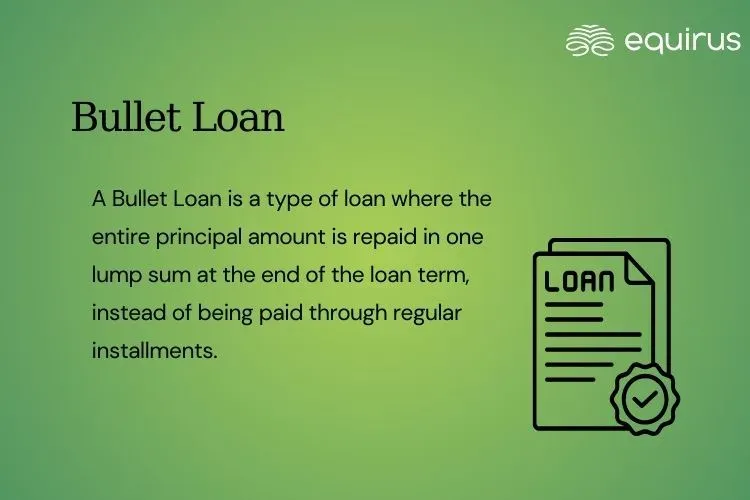Bullet Loan

Key Highlights
-
A Bullet Loan is a type of loan where the entire principal amount is repaid in one lump sum at the end of the loan term, instead of being paid through regular installments.
-
During the loan period, the borrower usually pays only interest periodically (monthly, quarterly, etc.), and the principal “bullet” payment is made at maturity.
What is Bullet Loan?
A Bullet Loan is a type of loan where the entire principal amount is repaid in one lump sum at the end of the loan term, instead of being paid through regular installments. During the loan period, the borrower usually pays only interest periodically (monthly, quarterly, etc.), and the principal “bullet” payment is made at maturity.
How it Works?
- Interest is paid regularly (e.g., monthly).
- No repayment of the principal is made during the loan tenure.
- The full loan principal is repaid in one shot at the end of the loan period.
Example
Let’s say a company takes a bullet loan of ₹1 crore for 3 years at 10% annual interest:
It pays ₹10 lakh per year in interest (₹1 crore × 10%).
At the end of the 3rd year, it repays the entire ₹1 crore principal in one payment.
Where Bullet Loans are Used?
-
Real estate and infrastructure projects
-
Corporate loans where cash flow is expected later
-
Bond-like structures (e.g., Non-Convertible Debentures)
-
Short-term bridge financing
-
Structured loans for high-net-worth individuals or institutions
Advantages
-
Low cash outflow during the loan period
-
Useful when revenues are expected in the future
-
Good for projects with back-ended cash flows
-
Easier to manage in early business stages
Disadvantages
-
Large repayment obligation at maturity
-
Risk of default if the borrower can't arrange the lump sum
-
May carry higher interest rates due to increased risk
-
Not suitable for individuals with unpredictable income
Bullet Loan vs. Amortized Loan
| Aspect | Bullet Loan | Amortized Loan |
|---|---|---|
| Principal Payment | One-time at maturity | Regular payments throughout the term |
| Interest Payment | Periodic (monthly/quarterly) | Included in EMIs |
| Risk | Higher (due to lump-sum obligation) | Lower |
| Cash Flow Impact | Low during term, high at end | Evenly spread |
